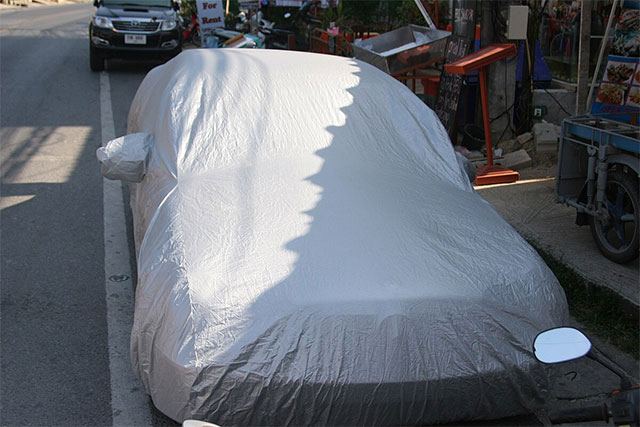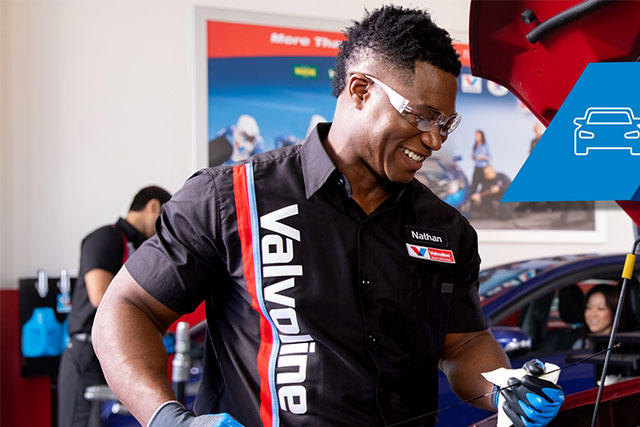Your vehicle is a significant investment, making it important to protect it from common exterior damages due to things like bird droppings, tree sap, dust, and other factors. These factors can cause severe harm to your car’s paint and overall appearance. However, a simple addition like a car cover can aid significantly in preventing such common exterior damages. Keep reading to find out more about the importance of car covers in preserving your car’s exterior integrity and shine.
Table of Contents
Understanding the Effects of Bird Droppings on Your Car
Bird droppings on your car may seem harmless, but over time, they can cause significant damage. These droppings are acidic due to a bird’s diet, which includes insects, grains, and berries. When bird droppings dry on your car’s paint, they can etch into the clear top coat, creating permanent damage. Moreover, the damage can be accelerated due to the sun’s heat, which bakes the droppings into the paint.

Constant cleaning and high-pressure washing can help mitigate the damage. However, the constant washing can also be harmful to the car’s paintwork. Therefore, it’s more beneficial to prevent the droppings from landing on the car altogether. This is where car covers come into the picture. They provide a protective layer, helping to prevent bird droppings and other elements from directly impacting your car’s paintwork.
Furthermore, since cleaning car covers is easier than cleaning a car’s exterior, the use of covers saves you valuable time and effort in maintenance. They also save you from the potential cost of repainting your vehicle due to the damage caused by bird droppings.
Preventing Tree Sap Damage with Car Covers
Tree sap is another common element that can cause severe damage to your car’s exterior over time. It sticks to the surface with a stubborn adhesive bond. If left untreated, tree sap can cause staining and discoloration, and it can also lead to a buildup of dirt and other contaminants. This can ultimately impact the shine and appearance of your car’s paintwork.
Tree sap is particularly harmful because it’s sticky and difficult to remove. Moreover, its damage is not just at the surface level. If left unchecked, it can seep into the car paint, causing permanent discoloration and stain. Some homeowners find sheltering their vehicles under trees convenient, but it’s essential to know that without a car cover, tree sap remains a potential damage to their cars’ exteriors.
A car cover can prevent tree sap from coming into direct contact with your vehicle’s paintwork. It forms a protective layer that shields the car’s surface from sap and other damaging elements. Hence, investing in a quality car cover is an effective way to counteract the harmful effects of tree sap on your car.
Combating Dust Accumulation
It may seem trivial, but dust accumulation can be harmful to your car’s exterior. Constant exposure to dust can dull your car’s paint and decrease its shine. Moreover, dust particles can act as abrasives, leading to microscopic scratches on your paintwork. Over time, these microscopic scratches can become more significant, taking away from the sleek look of your vehicle.
While regular washing can get rid of surface dust, it’s more advantageous to prevent dust from settling on your car’s surface. This is done effectively with a car cover. A cover acts as a barrier, reducing the amount of dust that comes in direct contact with your car.
In addition, car covers also help to reduce the need for frequent washing, saving both time and water. Dust can be easily cleaned off the cover, keeping your car consistently clean underneath. Hence, car covers serve as an effective solution to counter dust buildup on your car’s exterior.
Defending Your Car Against UV Rays
Ultraviolet (UV) rays from the sun can cause significant damage to your car’s paint and interior. They can lead to discoloration and dullness of the paintwork, reducing the aesthetic appeal of the car. Over time, exposure to UV rays can result in extensive, permanent damages that can cost considerable money to fix.
While you can’t prevent the sun from shining, you can protect your car from harmful UV rays by using a car cover. A good car cover is usually UV resistant and helps to block harmful rays from coming into direct contact with your car’s paintwork. This can be particularly useful if your car is parked outside for extended periods or in areas with a high UV index.
Aside from protecting your car’s paintwork, a UV-resistant car cover also helps to keep your car interior cool and protected from fading and cracking that can occur due to prolonged exposure to sunlight.
The Influence of Weather Conditions
Changing weather conditions can also potentially damage your vehicle’s exterior. Heavy rain, hail, snow, and even scorching heat can harm the body and paintwork of your car. These adverse weather conditions can cause rust, dents, scratches, and fading, which affects not only your car’s appearance but also its value.
Each season brings its own set of potential risks, and if left outdoors without protection, your car is at the mercy of these changing weathers. An effective way to keep your vehicle protected regardless of weather conditions is to use a car cover. Car covers can withstand various weather changes, providing a layer of defense against any damaging elements that might come in contact with your car’s paintwork.
Within the market, there are weather-specific car covers available that offer maximum protection against specific weather conditions. Whether it’s harsh sun, heavy snow, or powerful hail, a quality car cover can provide substantial protection for your vehicle.
Theft Deterrence with Car Covers
Beyond the protective aspect against environmental factors, car covers serve an additional purpose: theft deterrence. A car cover conceals the make, model, and overall look of your vehicle, making it less attractive to potential thieves. The extra time and effort required to remove the car cover can deter opportunistic thieves, aiding in keeping your vehicle safe.
Furthermore, using a car cover can also help prevent vandalism. It acts as a barrier, protecting your car’s exterior from scratches, spray paint, and other common acts of vandalism. Hence, car covers offer an extra layer of security that can protect your vehicle from unnecessary damage and theft.
Some car covers come with lock and cable systems, providing an added security measure. These lock systems secure the cover to the car, making it even more difficult for thieves or vandals to compromise your vehicle.
How to Choose the Right Car Cover
With the advantages of a car cover clearly outlined, you might be wondering how to choose the perfect one for your car. There are numerous factors to consider, including the size of the car, the fabric of the cover, the quality, and even the color. A car cover should fit your vehicle perfectly, ensuring proper protection from the elements.
It’s also essential to choose a car cover based on the specific elements you want protection from. For instance, a UV-resistant cover would be suitable in areas with high UV radiation levels. Similarly, a waterproof cover would be best in regions with heavy rainfall. Ensuring that the car cover you choose meets your specific needs guarantees that you get the best protection for your vehicle.
Apart from the specifications, the quality and durability of the car cover should also be considered. Ideally, a car cover should be able to serve you for long periods without wearing out. Invest in a reputable brand that guarantees durability and endorses the use of high-quality material in their car covers. Shopping from a quality supplier like Car Covers will ensure that you find the right cover for your needs.
Overall, investing in a car cover is a practical decision to protect your vehicle from common exterior damage. They provide a defense against the harsh effects of bird droppings, tree sap, dust, UV rays, variable weather conditions, and even theft. Choosing the right car cover based on your needs will ensure that your valued vehicle remains in excellent condition, preserving its aesthetics and value.













